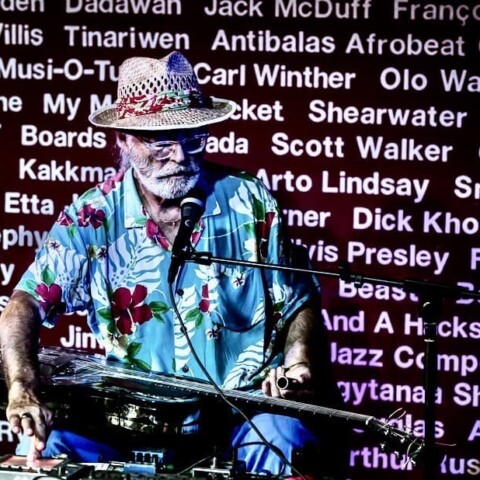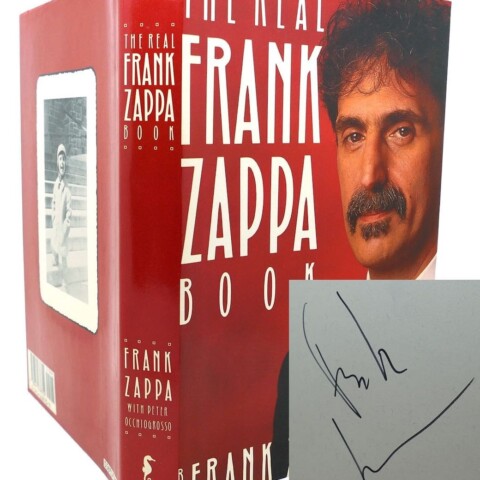With the passing of Kraftwerk’s Florian Schneider GARY STEEL reflects on his life-long obsession with electronic music.
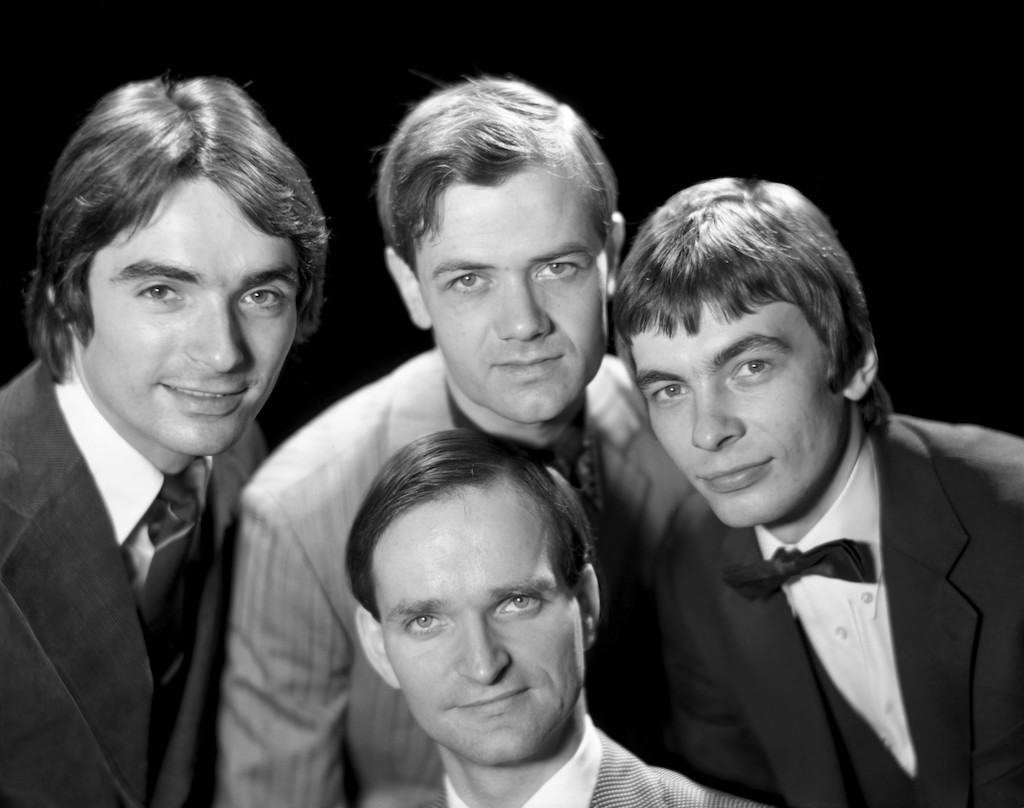
It felt like my brother had beamed in from another planet. We both loved music, but our idea of what constituted good music seldom gelled. Seven years older than me, much of his interest in music was pre-rock’n’roll.
Although he was a big fan of the likes of Nana Mouskouri and James Last, by and large he’d let the record club he belonged to decide what he’d get month-by-month. This meant that there was a welcome random element and because I couldn’t afford many albums with my paltry pocket money, I would audition every World Record Club item that came through the door.
Amidst the endless “sounds like hits” albums there was an occasional gem, most notably the Woodstock festival box, which blew my tiny mind. I would play Hendrix’s sci-fi rendition of ‘Star Spangled Banner’ at top volume on my parents’ radiogram with its turntable stacker and pathetic lack of dynamics. My budgie would flutter around the room screeching his head off while I went into some kind of semi-hypnotized state.
A few years later in 1974, I’d amassed a decent collection of rock albums when Kraftwerk’s Autobahn turned up in my brother’s room. I’d sneak in there while he was at work and crank it up on his 2-watt Bell Oriana music system and try and figure it out. Autobahn had few of the things I looked for in music at the time. At 15 years of age I wanted noise and energy and this wasn’t even rock music. But what was it? To me, it sounded a bit like the theme music to one of my favourite TV shows, Dr Who. Its sound universe wasn’t exactly revolutionary in an electronic music context. I was already digging my brother’s (Walter Carlos) soundtrack to the film Clockwork Orange, which had much weirder synthesiser sounds on it, and Keith Emerson of ELP was stretching the noise-making abilities of synthesisers much further in a rock context.
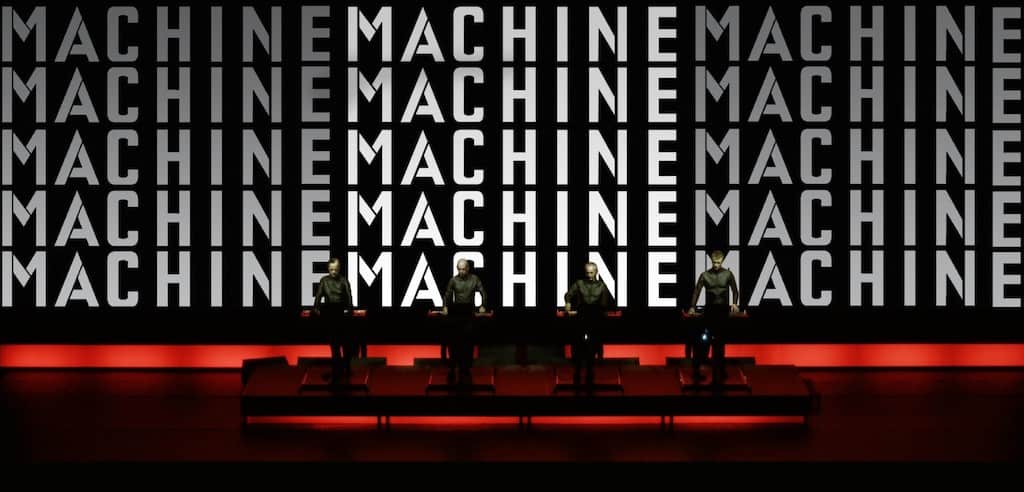
If anything, the rather tame sound of Autobahn already seemed a bit retro. But I kept listening, and slowly started to get it. This wasn’t rock music and everything about it was synthetic and it was a complete concept. I had no idea what an autobahn was at the time but I figured out that if I closed my eyes and just took in the stereo effects as they went past I got the sense of both precision and movement and speed.
Autobahn was never my favourite Kraftwerk album, though. It took a few years to fully get the bug but I set about finding their first three albums, and then Autobahn’s follow-up flop, Radio-Activity.
The self-titled debut was a revelation. Featuring future Neu! members Michael Rother and Klaus Dinger, it’s an extreme dip into sound manipulation on which Florian Schneider experiments with flute (and possibly violin) attached to various homemade gizmos to create wah-wah-like effects. The album is often written off as a footnote and Schneider later refused to acknowledge it and prevented its reissue, but even today to me, it’s a landmark and a record that stands out on its own without any clear precedent.
The conceptual Kraftwerk had yet to present itself, however, and in that sense, it was with Autobahn that the group was born. But Radio-Activity (1975) is superior in every way. Like that seminal album, it’s bound by a concept but it’s a much more interesting one. Kraftwerk’s brilliant (if sparse) wordplay was always sly, but here their celebration of radio waves and nuclear activity felt double-edged and the music was both gently experimental – luxuriating in pure sine tones and white noise – and capable of almost classical melody.
I can’t think of a single band whose music over a 10-year span produced such a set of splendidly beautiful, innovative and self-contained works of art on long-playing vinyl. Every single project from Autobahn in ‘74 through Computer World in ’81 was practically flawless, and while Electric Café has its issues, it’s improved over time.
One of the many things I loved about Kraftwerk was the fact that they knew the beauty in absence. I wouldn’t call their work ‘minimalist’ because there’s more going on than their often appears to be, but they knew how to leave out the obvious stuff that music fans (and especially musicians) expect to have filled on the sonic stage. To many at the time, this absence was just ‘wrong’, and this wrongness has followed the trajectory of electronic music down through the decades. For every person who appreciates the man-machine interface and the Cyborg precision of electronic music, there will be someone who feels that it’s inauthentic and that it lacks the very stuff of “real” music, the eloquence and slight errors of performers.
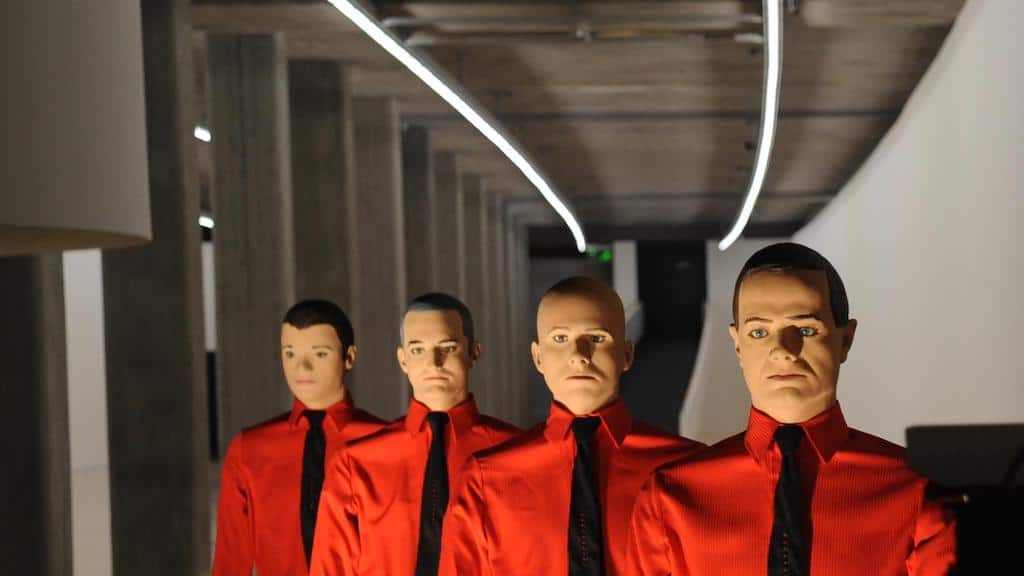
While I love the way performative musicians articulate their skills on an instrument, ever since Kraftwerk I’ve had the bug for electronic exposition as well. For me, there was a great flowering of post-Kraftwerk electronic music in the mid-‘90s, and it’s what encouraged me to open a small record shop that specialised in these new iterations of what Schneider and Co had started all those years ago. The Warp label and its roster of IDM (intelligent dance music) and then the creative development of techno from its roots in Detroit through to the more extreme experimentation in Berlin all carried with it DNA that stretched right back to Kraftwerk.
Many years ago I remember blasting Kraftwerk’s Trans Music Express in the car and how my girlfriend at the time took exception to the very thing I loved so much: what seemed at the time like long expanses of beats and sound effects with little apparent melody or vocals. Listening to those tracks now they seem way too short, and the albums as a whole contain plenty of hummable melodies and cute lyrics. Those 1990s electronic musicians essentially took tracks like ‘Metal On Metal’ and ‘Numbers’ and expanded on them with much more advanced technology.
And yet, for all their massive influence on the various strands of contemporary music, Kraftwerk remain utterly singular, contained in their bubble, and instantly recognisable. Part of this is that despite the technology used, and the sound of pure electronics that resulted, many of the melodies were gorgeous and had a nostalgic ring to them.
It’s hard to write this because Schneider and pals are so embedded in my private musical universe. I can live without the Hutter-led faux-Kraftwerk that’s still touring and releasing “live” albums, and really, the group’s creative existence ended back in 1986, but their achievement is incalculably massive.
And now, it’s my 5-year-old that’s led me back to Kraftwerk. A child’s taste in music isn’t a useful barometer of quality (after all, The Wiggles are also big in her world right now) but it’s interesting to note that the only other pop group that really appealed to her formative years was The Beatles. What Kraftwerk shares with the fab four is a knack for writing songs with melodies and structures that are delightfully simple and pleasing and yet graced with certain complexities that free them from being mere kindergarten fare. ‘Boing Boom Tschak’ and ‘We Are The Robots’ were as important to my young daughter as ‘I Am The Walrus’ and ‘Yellow Submarine’, and that’s saying something.










